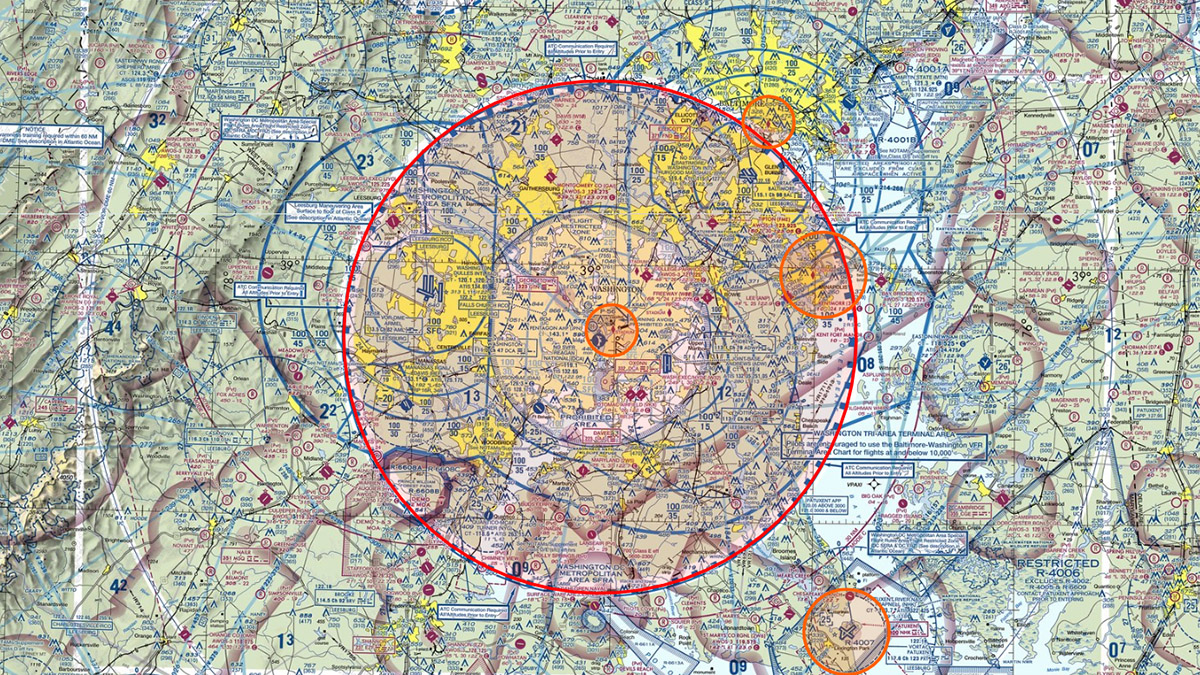SFRA, Leesburg airspace deviations mount
Spring is here, flying is enjoying a seasonal uptick—and so are pilot violations of the Washington, D.C., Special Flight Rules Area and Flight Restricted Zone, and failures to follow correct operating procedures for arriving and departing at Leesburg Executive Airport in Virginia via the Leesburg Maneuvering Area, located just inside the northwestern sector of the SFRA, the FAA said.

AOPA urges pilots flying in the Washington, D.C., region to review the notices to airmen providing the procedures and requirements specific to the area—even if they do not plan to enter the SFRA. Remember, if you plan to fly VFR within 60 miles of the DCA VOR/DME, you must have taken and successfully completed the Special Awareness Training online course for the D.C. Special Flight Rules Area prior to your flight.
Taking the course will help you avoid a failure to adhere to required operating procedures that could compromise safety and subject the pilot involved to potential enforcement actions. Widespread violations could also prompt concerned security officials to push for stricter airspace restrictions directed at general aviation, said Rune Duke, AOPA senior director of airspace and air traffic.
First, get your squawk code
A key point to remember about SFRA operations is that you must contact the appropriate ATC facility to obtain a discrete transponder code before entering the SFRA.
The FAA said one of the two most common operating errors pilots are committing is entering or exiting the SFRA while squawking the VFR code, 1200, which is never permitted in the SFRA. In each of the cases recently noted, the FAA filed a mandatory occurrence report—defined as “an occurrence involving air traffic services for which the collection of associated safety-related data and conditions is mandatory,” which could lead to further action against the pilot involved.
Leesburg Maneuvering Area
The FAA also has made AOPA aware of numerous violations of Leesburg Maneuvering Area procedures. Pilots may enter the Leesburg Maneuvering Area while squawking transponder code 1226 to arrive at or depart Leesburg Executive Airport by the most direct route available without entering the SFRA.
Flying to or departing Leesburg through the maneuvering area does not require a Washington, D.C., SFRA flight plan, but conducting pattern work at the airport does require an SFRA flight plan, and pilots will receive a discrete transponder code.
In recent months, air traffic control has noted numerous instances of pilots flying into the SFRA while squawking 1226, or departing Leesburg squawking 1200, the FAA said.
The FAA urged all pilots to remember these key points about SFRA and Leesburg Maneuvering Area operations, and to review the relevant notices to airmen. It is required to squawk a discrete code and be in communication with ATC while operating within the SFRA/FRZ, in accordance with notams 6/7201 and 8/3032. It is required to squawk 1226 and remain in the confines of the Leesburg Maneuvering Area when operating VFR to and from Leesburg Executive Airport while not in communication with ATC, in accordance with notam 6/7215.
Squawking 1200 “is never allowed” within the SFRA/FRZ, the FAA emphasized.



